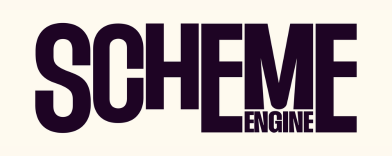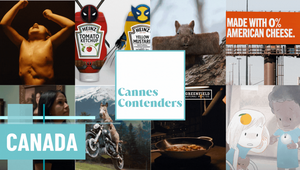
H2Ottoman: ONE23WEST Demonstrate ‘How Design Can Empower Us to Live More Consciously and Responsibly’

As cities expand and populations grow, so too does the demand for water. With most existing urban infrastructure not equipped to handle increasing water demands in a sustainable way, especially during dry seasons, collecting rainwater locally is being viewed as a crucial way to ease pressure on municipal systems.
But what is the best way to collect large quantities of rainwater? Well, this is exactly the question Vancouver-based advertising and design agency ONE23WEST began ideating on. Taking existing rainwater collection behaviours into consideration, the team concepted, designed, and produced (entirely in-house) a chic new seat-cum-cistern: H2Ottoman.
The idea? Rain water trickling from the roof of any building will run down gutters and be redirected into a hose attached to the H2Ottoman, for filling. In addition to storing 20-gallons of rainwater, the masterful design also provides a comfortable and stylish seat, aptly modeled on the shape of a water droplet.
Impressed and intrigued by the nature of this innovation, LBB’s April Summers sat down with ONE23WEST founder and ECD, Jeff Harrison, to learn the story behind this seamless, and chic solution to an urgent problem.
LBB> Can you tell us a bit about the conversations which led to the idea for the H2Ottoman?
Jeff> Rainwater collection isn’t a new concept but as urban density increases and passive outdoor spaces shrink, the traditional rain barrel no longer fits, either physically or aesthetically. The idea behind this project was to reimagine water collection through the lens of design, by integrating it seamlessly into something people already use and want, like patio furniture. It’s also a chance to spark conversation and awareness about the very real issues we face with drought and water scarcity, especially when it comes to sustaining home gardens and local food production. Frankly, it’s surprising that provinces haven’t already mandated rainwater collection in all new builds. It’s such a simple, necessary step.
We also recognised a huge white space in the category for something design-forward. Most consumer options we found were purely utilitarian — often bulky, barrel-like eyesores. Who wants a giant plastic drum sitting in their yard?
LBB> How did the H2Ottoman emerge as the best vehicle for this message and utility? Were other product concepts explored first?
Jeff> We intentionally designed the ottoman for small spaces and small gardens. The more we increase density in urban spaces, it limits us to the amount of area we can dedicate to sustainability. The H2Ottoman is also the first product in what hopefully will become more products in the future.
LBB> Did you face any challenges when designing something that had to be both beautiful and highly functional under pressure (literally)? And how did your team navigate engineering limitations while keeping the aesthetic integrity?
Jeff> From the start, we knew the design needed to support 20 gallons of water, which meant reinforcing the exterior structure. We landed on a louvered approach, not just for strength, but also as a visual cue, echoing the form of a falling water droplet. What began as a structural necessity ultimately became a defining design feature. Over the course of a year, we iterated through multiple 3D-printed prototypes, each one bringing us closer to the final form.
LBB> What were the biggest creative debates during development? Were there any ‘make-or-break moments’ where the product or strategy almost changed course?
Jeff> Funnily enough, the biggest debate was around how to collect water. The original idea was to collect rainwater through holes in the top of the seat, allowing for a connection-free system. After testing, it quickly became clear that this method would never deliver the volume needed. To collect larger quantities more efficiently, we had to look elsewhere and the roof offered the ideal solution. We knew that 1 millimeter of rain falling on 1 square meter of roof yields about 1 liter of water, so tapping into that surface area gave us the capacity we were after. An added bonus: multiple units can be tethered together to further increase storage volume. Once filled you can close the valve and remove the hose.

LBB> How does the H2Ottoman reflect ONE23WEST’s values or broader creative mission?
Jeff> The H2Ottoman is a perfect reflection of our belief that creativity should solve real-world problems. At ONE23WEST, we don’t think like a traditional ad agency – we approach challenges with a forward-thinking lens, using creativity and design thinking to make meaningful, practical change.
LBB> Why Kickstarter? Was the choice to launch on a crowdfunding platform part of the positioning strategy?
Jeff> Absolutely. Kickstarter isn’t just about funding – it’s about validating the idea with a real community. We chose it as a strategic platform to gauge interest, build some momentum, and secure the volume we need to scale production. It turns early supporters into advocates and gives us a direct path to market without compromising the design or integrity of the product.
LBB> What is the goal here? To generate awareness, change behaviour, prove a concept, or all three?
Jeff> My goal is really all three. But, ultimately we want H2Ottoman to encourage people to take more ownership of their role in water conservation and recognise that even small actions – like collecting rainwater – can collectively ease the pressure on our reservoirs. I want the H2Ottoman to start a bigger conversation about how design can empower us to live more consciously and responsibly.
LBB> What’s next? Could this open the door to a full range of functional, sustainable design solutions?
Jeff> This is just the beginning. I see real potential for expanding into a broader line of design-led water storage products. But for now, the goal is simple: to raise awareness and help people reimagine the possibility of living with less reliance on the city water system.
Check out more ONE23WEST design work here...
More from LBB's April Summers here...















